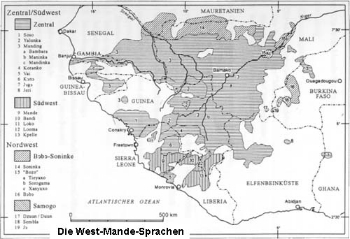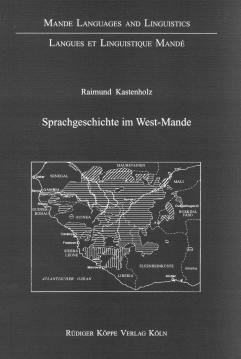



The classificational term Mande unites about 40 languages mainly spoken between the Gambia river in the West and central Burkina Faso in the East, in the frontier area of Mauritania with Mali in the North up to the rain forest of Côte d’Ivoire and the coast of Guinea. Delafosse (1929) clearly distinguishes between the term Mande as expression for the language family on the one hand and Manding as the great dialectal continuum that includes well-known language forms as Bambara, Maninka, Dyula and Mandinka on the other hand. Azer, Soninke, Bozo, Tigemaxo (Tiéyaxo), Xanyaxo for example are West Mande languages.
The goal of the present study is to develop basics for historio-comparative, i.e. genealogical, research in the so-called Mande languages that are empirically oriented. Historical comparative examinations within the African language families inevitably differ from those within the Indo-European language families and others because they lack written documents and therefore the literary monument as evidence for earlier language forms. This lack has several consequences which are to be discussed methodologically.
Following the links below, you will find further descriptions of West Mande languages:
© 2026 by Rüdiger Köppe Verlag – www.koeppe.de